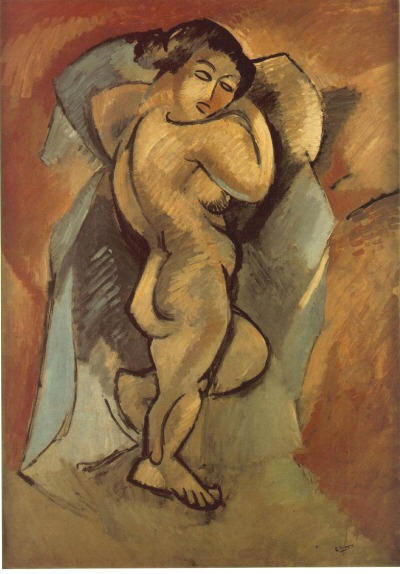
Can we agree that there are shifts in artistic taste, that is, shifts in what is considered beautiful, over time? I'll try to describe them in broad brush terms here. This will be part of the broader project of uniting my Moore-ish breakthrough in ethics (really in axiology) on the one hand, and the still-powerful historicist/Jamesian memes at large in my skull on the other. We should be able to talk about beauty in historical terms.
If we try, we notice at once that there is an underlying battle between connoisseurship and novelty. Suppose that we are living in a time when the impressionistic style is dominant in the world of painting. The smart people are the ones who know something about impressionism, who have developed and shared with one another standards that determine which painters are doing it best, etc. A recognition of beauty arises and is understood within this universe of discourse.
BUT ... there is also an innate human drive for novelty. Eventually the relevant public will get bored by impressionism, and there will be a thirst for the next Hot New Thing -- maybe (in my very simplified history): cubism. The initial appeal of cubism will be that it is NOT impressionistic, and there will be intense arguments between those who speak for novelty and the connoisseurs of the older style. Those arguments will be reasoned. They aren't simply "you like vanilla." Yet the underlying dynamic is clear. The bored cannot be talked out of looking for novelty. The connoisseurs can sometimes be talked into seeing the value in the new thing, and even becoming connoisseurs of that.
And, inevitably, the process is repeated down the line.
There are, then, two distinct kinds of first-order aesthetic arguments. There are arguments among connoisseurs who share common standards/premises and who are interested in the same particular style/period. "The same standards that you invoke in explaining your enjoyment of Picasso's Dryad should apply to the appreciation of Braque's Large Nude, should they not?"
And then there are the arguments among styles, most pungently the arguments between the old and the new of any particular moment.
Christopher,
ReplyDeleteYour comments caused me to free associate to Thomas Kuhn's "normal science" and paradigm shifts. However, a difference between Kuhn's paradigm shifts and "shifts in what is considered beautiful" is that, in science, a new paradigm replaces an old -- Copernicus replaced Ptolemy; Einstein (in part, I guess; I'm no physicist) replaced Newton. By contrast, a "shift in what is considered beautiful" does not really occur; rather the old and the new forms of art both come to be considered beautiful.
But they are not necessarily considered beautiful in the same way. We look at impressionist art and cubist art differently; they do not have the same type of beauty.